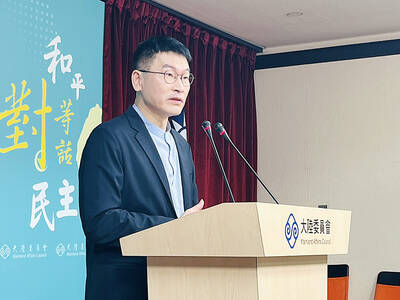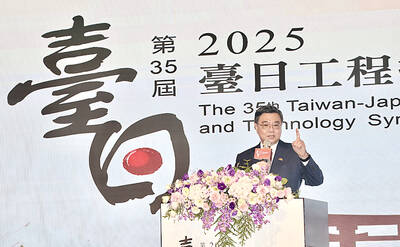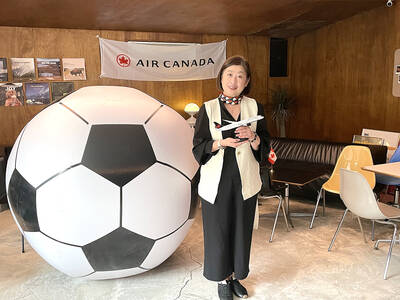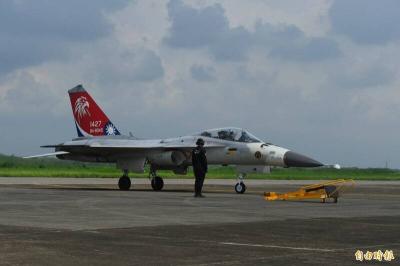The Presidential Office yesterday rejected allegations that the Chinese Nationalist Party (KMT) had struck a secret deal with the Chinese Communist Party (CCP) on the country’s participation in the WHO.
Presidential Office Spokesman Wang Yu-chi (王郁琦) said such a claim was “far from the truth” and that the matter required more negotiation.
Wang made the remarks in response to a report in yesterday’s Liberty Times (the Taipei Times’ sister paper).
The report cited Democratic Progressive Party (DPP) Legislator Kuan Bi-ling (管碧玲) as saying that the administration had come to an agreement with its Chinese counterpart stipulating that Beijing would issue a letter inviting the administration to participate in World Health Assembly (WHA) activities this year under the name “Chinese Taipei.”
Kuan said that China and the WHO signed a memorandum of understanding (MOU) in 2005 stipulating that all WHO-related communication with Taiwan must be cleared by Beijing first.
Though the administration of President Ma Ying-jeou (馬英九) took pride in Taiwan’s inclusion in the International Health Regulations (IHR) this year, Kuan said that Taipei was listed as “a contact point in Taiwan” and that eight of Taiwan’s ports were listed under China as IHR-authorized ports, she said.
Wang downplayed the IHR controversy yesterday, saying that such occurrences were not uncommon since the Republic of China lost its UN seat. He believed the public would understand the country’s diplomatic difficulties.
Wang said his understanding was that the Ministry of Foreign Affairs had taken steps in response to the situation and that the government would do its best on the issue.
Regarding the claim that Beijing would invite Taipei to participate in WHA activities, Wang said Minister of Foreign Affairs Francisco Ou (歐鴻鍊) had stated the country would not accept such an invitation.
Earlier yesterday, Kuan told a press conference: “The administration of President Ma is sacrificing Taiwan’s sovereignty to join the WHA as an observer, and the DPP will not accept this.”
She said the KMT and the CCP had reached agreements on four points: that Taiwan would consult with China and not with the international community on the WHA bid; that Taiwan would join the WHA under the title “Chinese Taipei” and not challenge the “one China” framework; that the WHA would review Taiwan’s observer status annually under the title “Chinese Taipei”; and that the WHO secretariat’s letters to Taiwan be delivered to Beijing.
Kuan said if the WHO invited Taiwan to join the WHA via Beijing as an observer this year, it would be like telling the international community that Taiwan is part of China.
“Taiwan’s bid for the WHA is a diplomatic matter, but the government has turned it into a cross-strait issue, which would give Beijing all the power to decide on Taiwan’s international activities,” she said. “Ma wants to make political capital with Taiwan’s entry to the WHA this year, but it might come at the cost of the country’s sovereignty and diplomatic rights.”
At a separate setting, DPP Spokesman Cheng Wen-tsang (鄭文燦) said that China’s 2005 MOU with the WHO stipulated that Taiwan join the organization with the title of “Chinese Taipei” and that if the KMT government accepted such an arrangement, it would be tantamount to saying that Taiwan was part of China.
Asked for comment, Chinese Nationalist Party (KMT) caucus deputy secretary-general Lin Hung-chih (林鴻池) rebutted Kuan’s allegations, saying it was impossible for the government to have made any secret deal with China regarding the nation’s WHA bid.
Lin said the caucus believed the Ministry of Foreign Affairs would push the nation’s bid with the conditions of “dignity, autonomy, pragmatism and flexibility.”
ADDITIONAL REPORTING BY FLORA WANG

LOW RISK: Most nations do not extradite people accused of political crimes, and the UN says extradition can only happen if the act is a crime in both countries, an official said China yesterday issued wanted notices for two Taiwanese influencers, accusing them of committing “separatist acts” by criticizing Beijing, amid broadening concerns over China’s state-directed transnational repression. The Quanzhou Public Security Bureau in a notice posted online said police are offering a reward of up to 25,000 yuan (US$3,523) for information that could contribute to the investigation or apprehension of pro-Taiwanese independence YouTuber Wen Tzu-yu (溫子渝),who is known as Pa Chiung (八炯) online, and rapper Chen Po-yuan (陳柏源). Wen and Chen are suspected of spreading content that supported secession from China, slandered Chinese policies that benefit Taiwanese and discrimination against Chinese spouses of

ALIGNED THINKING: Taiwan and Japan have a mutual interest in trade, culture and engineering, and can work together for stability, Cho Jung-tai said Taiwan and Japan are two like-minded countries willing to work together to form a “safety barrier” in the Indo-Pacific region, Premier Cho Jung-tai (卓榮泰) yesterday said at the opening ceremony of the 35th Taiwan-Japan Modern Engineering and Technology Symposium in Taipei. Taiwan and Japan are close geographically and closer emotionally, he added. Citing the overflowing of a barrier lake in the Mataian River (馬太鞍溪) in September, Cho said the submersible water level sensors given by Japan during the disaster helped Taiwan monitor the lake’s water levels more accurately. Japan also provided a lot of vaccines early in the outbreak of the COVID-19 pandemic,

PROMOTION: Travelers who want a free stopover must book their flights with designated travel agents, such as Lion Travel, Holiday Tours, Cola Tour and Life Tours Air Canada yesterday said it is offering Taiwanese travelers who are headed to North America free stopovers if they transit though airports in Japan and South Korea. The promotion was launched in response to a potential rise in demand for flights to North America in June and July next year, when the US, Canada and Mexico are scheduled to jointly host the FIFA World Cup, Air Canada said. Air Canada offers services to 13 of the 16 host cities of the tournament’s soccer games, including Toronto and Vancouver; Mexico City, Guadalajara and Monterrey in Mexico; Atlanta, Georgia; Boston; Dallas; Houston;

The US approved the possible sale to Taiwan of fighter jet spare and repair parts for US$330 million, the Pentagon said late yesterday, marking the first such potential transaction since US President Donald Trump took office in January. "The proposed sale will improve the recipient's capability to meet current and future threats by maintaining the operational readiness of the recipient's fleet of F-16, C-130," and other aircraft, the Pentagon said in a statement. Trump previously said that Chinese President Xi Jinping (習近平) has told him he would not invade Taiwan while the Republican leader is in office. The announcement of the possible arms